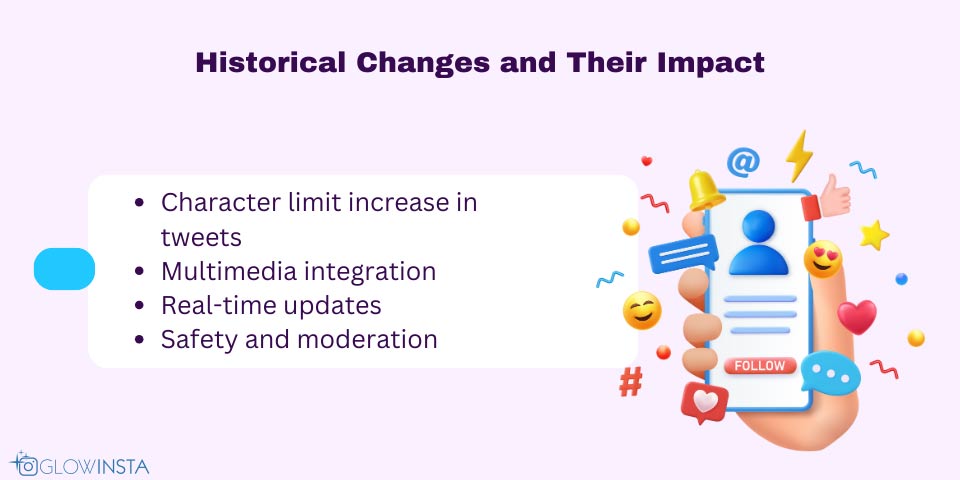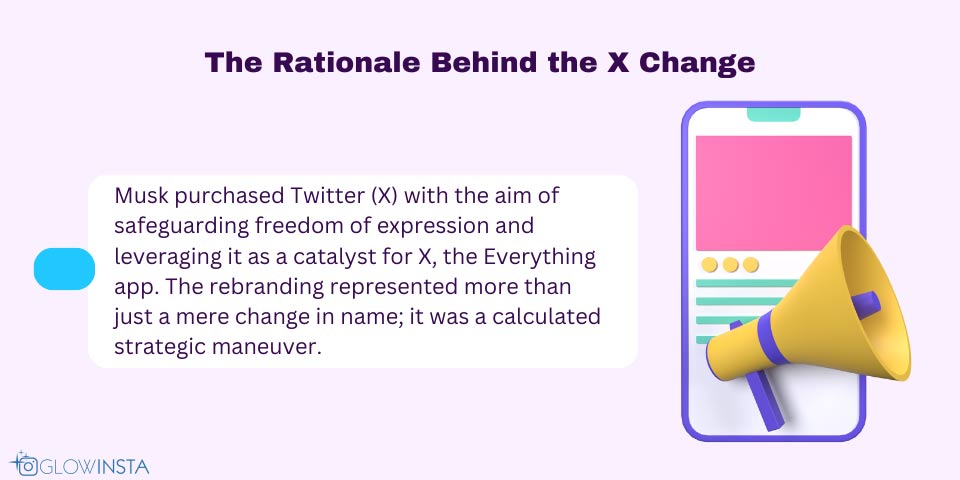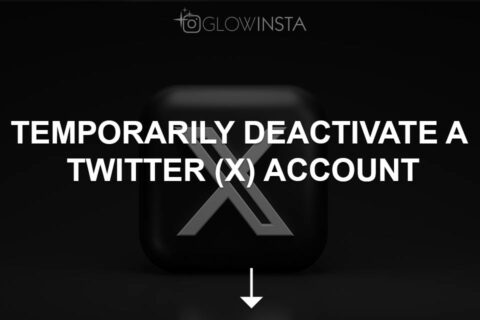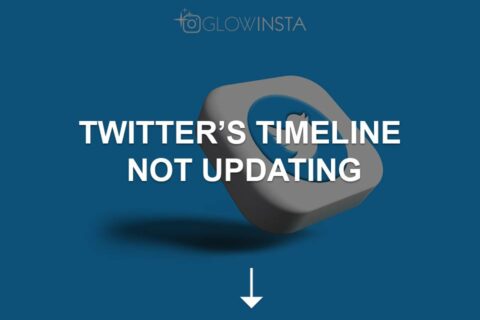Changing its name to X, Twitter has sparked many debates among social media users. However, since its birth in 2006, Twitter has remained a dominant force in social media and seems to keep its throne despite reactions to its drastic name change. But why Twitter changed to X, and how did it impact the users? Let’s discuss all these questions in detail.
Evolution of Twitter’s Platform
The evolution of Twitter’s platform has been quite remarkable. Before Twitter changed to X, the platform had already gone through quite an evolution. It has made significant progress since it was first launched in 2006. Twitter (X) was originally a microblogging platform where users shared 140-character updates called “tweets.” However, it has made several enhancements to improve user experience over time. Don’t forget that you can buy Twitter (X) likes to boost your tweets!

Historical Changes and Their Impact
Twitter (X) has gone through some critical changes throughout its history. In other words, it is possible to list some drastic updates before Twitter changed to X. Here are a few critical historical changes and their impact:
- Character limit increase in tweets: One of the most significant changes was the character limit increase from 140 to 280. This enabled users to express themselves more comprehensively, fostering meaningful conversations and improving the user experience.
- Multimedia integration: Twitter (X) has become more visually engaging since introducing multimedia content, such as photos, videos, and GIFs.
- The introduction of hashtags has revolutionized how people engage in conversations and find new content. Hashtags allow users to organize tweets and increase visibility to others with shared interests. It has played a significant role in creating communities, popular topics, and important campaigns.
- Real-time updates: Twitter’s real-time updates make it an invaluable source for breaking news and live event coverage. Users can now immediately follow and engage with updates from news organizations, public figures, and eyewitnesses, facilitating the dissemination and discussion of information.
- Safety and moderation: Twitter has taken several measures to tackle online harassment and enhance the safety of its platform. Implementing muting, blocking, and reporting abusive content has created a safer user environment. However, Twitter (X) continues to refine its policies and tools to address remaining challenges.
If you have problems with the app, check the Twitter (X) Help Center.
Analyzing User Feedback over the Years
As mentioned earlier, Twitter (X) expanded its character limit from 140 to 280 in 2017, which remains one of the most significant changes in the platform. This enabled users to express themselves more freely and share detailed thoughts. This change demonstrates Twitter (X)’s responsiveness to user feedback, as many users requested longer tweet limits to express their ideas better. Twitter (X) has also introduced threaded conversations, making it easier to follow and participate in discussions.
The use of multimedia content is another significant development worth noting. Users can now add photos, videos, and GIFs to tweets, making them more dynamic and captivating. Twitter (X) has integrated Periscope, too, enabling live video streaming on the platform. It also resulted from analyzing user feedback because live streaming has become increasingly popular. For this reason, the platform has offered this feature to its users to respond to their needs. It was all revolutionizing changes in the platform’s history before Twitter changed to X.
Deciphering the “X” Change
But what was the reason behind this radical change? Was it also a result of user feedback? Or how did users respond when the worldwide famous Twitter changed to X? Let’s discuss the rationale behind this radical name change, user reactions, and adaptations to X.

The Rationale Behind the X Change
Okay, but why Twitter changed to X? Well, the reason for this drastic name change goes back to October 2022, when Elon Musk completed his acquisition of Twitter (X). On July 23, Musk announced that Twitter would be renamed “X”. However, the change to “X” was not implemented on Apple’s App Store until July 31. According to Musk, he acquired Twitter (X) to ensure freedom of speech and as an accelerant for X, the Everything app. The rebranding was not just a name change but a strategic move. Musk also explained that while the Twitter name made sense in the past when messages were limited to 140 characters, the site has evolved to allow users to post almost anything, including videos that can be hours long.
User Reactions and Adaptations to X
Most users strictly opposed when Twitter changed to X because it had already become a worldwide brand with its name. Some users even claimed they would delete their accounts to show their reaction. However, the reactions have calmed down over time, and users have started to adapt to other changes, such as X Premium, previously known as Twitter Blue.
You may also want to learn more about Twitter Videos Not Playing error.
When did Twitter’s name change to X?
On July 23, 2023, Elon Musk announced that Twitter would be renamed “X”.
What does X stand for?
According to Elon Musk, it just represents the letter X. It doesn’t have any other further meaning.
When was Twitter (X) launched?
Twitter (X) was launched in San Francisco, California, on March 21, 2006.




2 Comments
Interesting read! This article provided great insight into Twitter’s decision to change to X. It really helped me understand the rationale behind the update.
Fascinating article on Twitter’s latest change. The detailed analysis of the ‘X’ name and its impact on user experience was very enlightening.